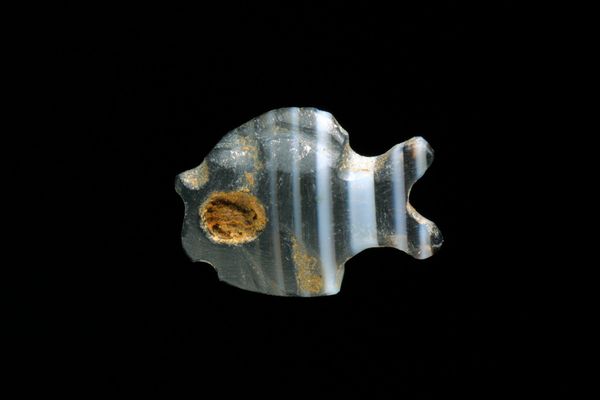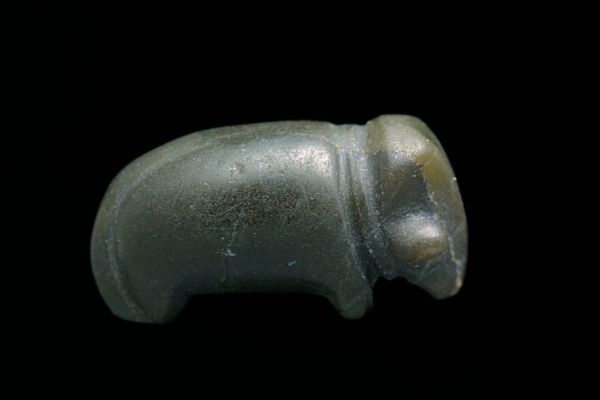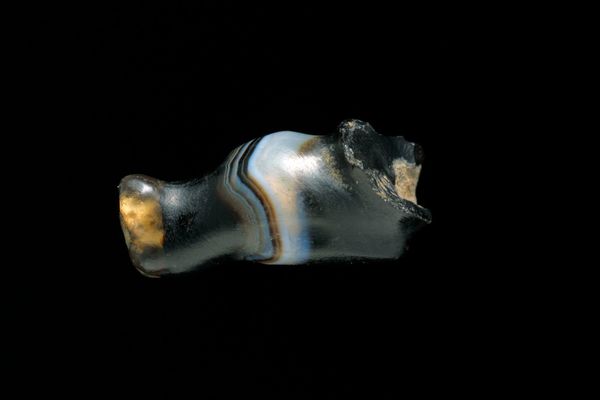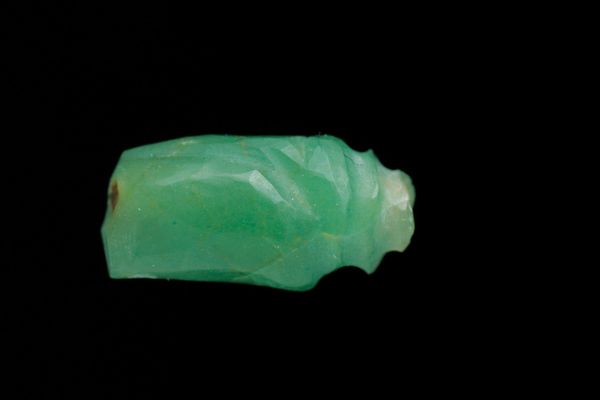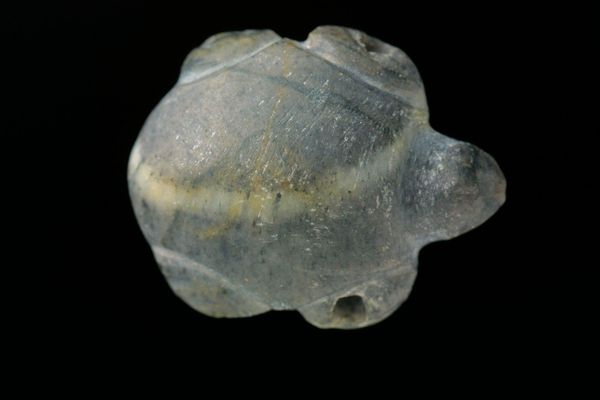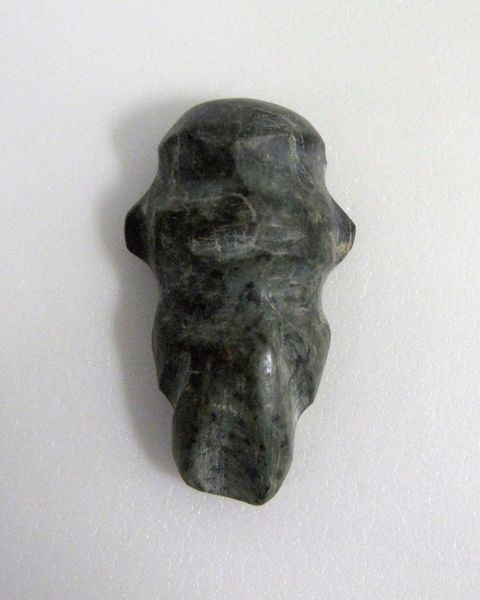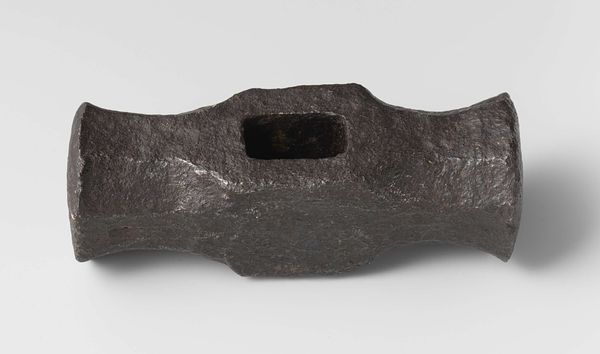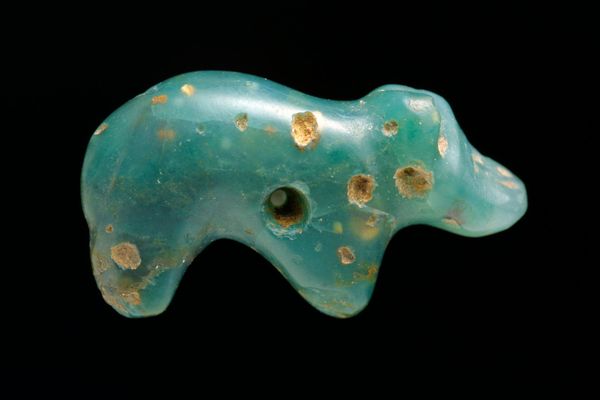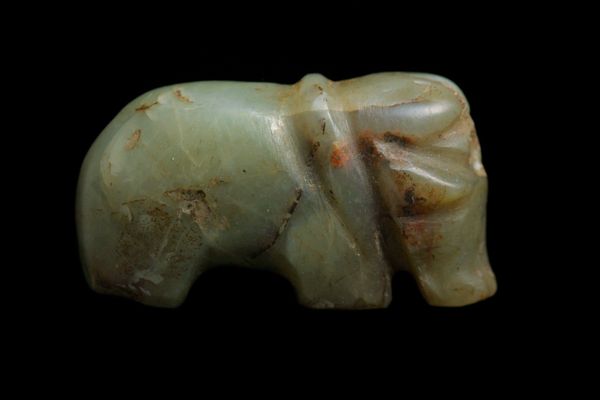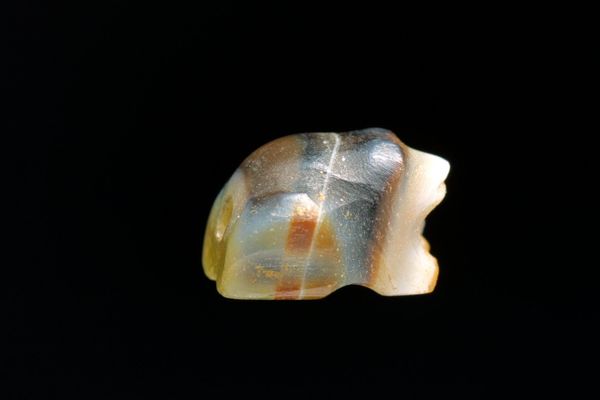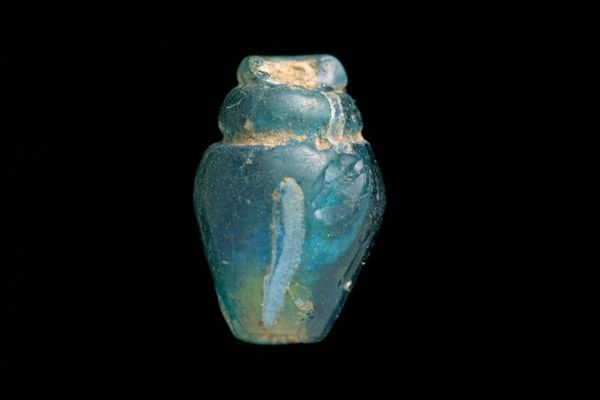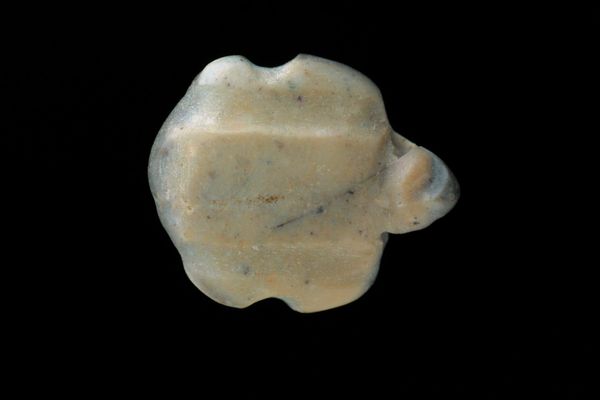
carving, sculpture
#
carving
#
stone
#
sculpture
#
figuration
#
ancient-mediterranean
#
sculpture
Dimensions: 5/16 x 1/2 x 1/4 in. (0.8 x 1.3 x 0.6 cm)
Copyright: Public Domain
Curator: Before us is an ancient carving from sometime between 501 and 800 AD. It’s identified as a bead in the shape of an elephant, crafted by an anonymous artist. We find it today at the Minneapolis Institute of Art. Editor: My initial impression is of a primal strength captured in miniature. The artist managed to evoke an animal of immense power and intelligence within such a small piece of stone. Curator: Beads such as this served multiple functions in ancient societies, moving beyond mere adornment. This elephant bead likely served as a symbol of power or status. Ownership could have signified the wearer's role in trade, diplomacy, or even military campaigns involving elephants. Editor: Elephants themselves are complex symbols across many cultures, carrying connotations of memory, wisdom, royalty, and even gentleness despite their size. Perhaps this bead was worn to invoke those very qualities, a tiny talisman worn to subtly influence perception or behavior. Curator: Indeed, the politics surrounding imagery cannot be ignored. The presence of the elephant motif signifies the access to or perhaps control over resources or lands where elephants were found. The very material from which this bead was sculpted—stone—speaks of endurance and permanence, further solidifying its symbolic impact. It whispers tales of trade routes, of artistic workshops possibly supported by elite patronage. Editor: I also wonder about the more intimate meanings this piece held. A stone, smoothed by handling, worn close to the skin—did it offer protection, a connection to ancestral wisdom, or simply serve as a comforting weight against the wearer’s breast? The personal element intrigues me just as much as the cultural narrative. Curator: It's fascinating to ponder how a piece so small carries such a wealth of historical information, reflecting ancient political landscapes, trade networks, and power dynamics. Editor: Absolutely, and it serves as a wonderful reminder of how symbols transcend time and culture, still stirring our emotions and imaginations centuries later.
Comments
No comments
Be the first to comment and join the conversation on the ultimate creative platform.
